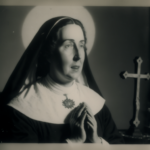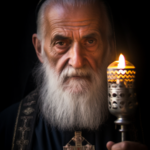St. William of York
Saint William of York
When they lived:
St. William of York, also known as William FitzHerbert, lived during the 12th century. He was born in 1090 and died in 1154.
Where they lived:
St. William of York lived in England, primarily in the city of York. This was during a time when England was still divided into several smaller kingdoms before the Norman Conquest.
Notable world events during the time of their life:
- The Investiture Controversy (1075-1122): A struggle between the papacy and secular rulers over the appointment of bishops and church officials.
- The First Crusade (1096-1099): A significant military campaign with profound consequences for the Christian world and the Middle East.
- The Anarchy (1135-1153): A period of political turmoil and civil war in England following the death of King Henry I.
- The Birth of Universities: Emergence of European universities in the 12th century, playing a pivotal role in education and knowledge preservation.
- The Works of Hildegard of Bingen: Influential contributions to theology and science by visionary abbess Hildegard of Bingen.
- The Rediscovery of Aristotle: Rediscovery of Aristotle’s works in the West, impacting medieval scholasticism.
Their patronage:
St. William of York is primarily known as the patron saint of York, England. He is also venerated as a patron saint for pregnant women, women in labor, and those who have difficulties conceiving. His intercession is sought by those facing miscarriages or complications during childbirth. The cult of St. William in York Cathedral was a significant aspect of medieval religious life in northern England.
St. William’s story is not only one of religious devotion but also a window into the complex and tumultuous political and religious landscape of 12th-century England, where the power struggles between church and state, as well as the intellectual and cultural developments of the time, were shaping the course of history.
Early Life
William Fitz Herbert was born in the late 11th century, around 1090, in York, the United Kingdom. His father was Herbert of Winchester, said to be the treasurer and Chancellor of King Henry 1. Most records give his mother’s name as Emma, who was a half-sister to King Stephen.
He was well educated and grew up to become a priest.
Positions in the Priesthood
William held administrative positions while in the priesthood. He was chancellor of the Weighton diocese of Yorkshire between June 27, 1109, and February 27, 1114.
And between 1114 and 1143, he was appointed Archdeacon of the East Riding. This position made him a senior ecclesiastical officer of a subdivision of the diocese of York.
By the year 1130, he had become the Treasurer of York. At this point, there were suggestions in some quarters that William’s appointment to these positions at a relatively young age was because of his father’s influence.
His father, Herbert, was a rich and highly connected man, having manorholdings in Yorkshire.
William served in these positions until his appointment as Archbishop.
Trouble in the Cathedral
William experienced a troubled ecclesiastical career. In some places, it is believed that part of his trouble was because he was closely related to the English throne. The monarchy was in a contest between Stephen of Blois (his uncle) and Empress Matilda. It could be said he was a victim of his heritage and show of power.
Another argument is that his troubles resulted from his family’s alleged buying of sacred positions (simony) with their influence.
The first sign of trouble for Williams was when he was appointed Archbishop of York following the death of the sitting bishop. His appointment came in 1141 at the instance of King Stephen in opposition to the selection of Henry Murdac, a Cistercian monk.
His election was rejected by the local archdeacons and the Cistercian brothers (monks) of Yorkshire. The Cistercians had accused Williams of parsimony, unchastity, and interference by King Stephen. The Archbishop of Canterbury, Theobald of Bec, refused to recognize him based on the allegations against him pending the appeal sent to the Pope.
More Trouble for William
In 1143, Pope Innocent 11 ruled that Williams would be consecrated if he could prove that the allegations against him were false and swore an oath to that effect. William proved himself innocent of all the charges, and on September 26, 1143, William was consecrated.
He carried out his duties with humility and introduced many ecclesiastical reforms. This won him the approval of many. But William had yet to obtain the Pallium, an ecclesiastical investment that represents a sign of authority given to the bishop by the Pope. Sadly, the Pope passed away before Williams could obtain the power.
Pope Eugene 111, a Cistercian, became the new Holy See, and William’s effort to obtain the Pallium was abortive. Prompted by many petitions from Bernard Clairvaux (abbot) against William in favor of rival Henry Murdac, the Pope opened a new inquiry into William’s appointment as bishop.
In 1147, William was suspended and deposed by Pope Eugene 111. The Pope concluded that his appointment of William of St. Barbara as Dean of York lacked due process. Hence, Henry Murdac was appointed as the new bishop of York.
William stayed with his friend the King of Sicily for a while and returned to Winchester, where he lived a quiet and devout life as a monk. In 1153, both Henry Murdac and the Pope passed on.
God’s Wish or Murder?
William appealed to the new Pope Anastasius IV to be restored to his former position after the passing of Henry Murdac in October. On December 20, 1153, the Pope granted his request and invested him as the Archbishop of York, 14 years after his first appointment.
Williams returned to York and showed great kindness to the Cistercians and all who had opposed him. He was determined to work for the good of everyone.
Less than a month after he became the archbishop of York, he suddenly fell ill while celebrating Mass on a Trinity Sunday. His death occurred on June 8, 1154.
His archdeacon, Osbert, was suspected of putting poison in the Chalice while drunk. This accusation was never proven.
Following miracles that erupted at his tomb, Pope Honorius 111 canonized him as a saint in 1227.
5 Interesting Facts About St. William of York
- He’s on record as twice the Archbishop of York. Journey to that
record was laced with thorns. - Williams bore hardship and suffering from others with an unusual
strength. - He was a man who practiced forgiveness. His total acceptance of the
Cistercians are enough proof for that. - I hope you are aware that St. Williams passed through three different
Popes to be the bishop of York? Yes, it was a strenuous journey. - Do you know any of the miracles recorded at his tomb? They include;
Oil flowing from his grave cured many people of their infirmities.
Dead people were brought back to life. Five blinds were given.
their sight, a new sight was restored to a man who had been
unjustly defeated and blinded in a duel. He was a saint of
miracles.
Prayer to St. Williams of York
St. William, God chose you to be Archbishop of York, but you were unjustly accused of sin. Your election was opposed by many in favor of another. Even through all this, you never took your eyes off Christ and His will for you. You devoted yourself to a life of prayer and mortification. After many years, you were finally restored to the land that was rightfully yours. Instead of reserving spite, you showed the utmost amount of forgiveness and love for those who had before been in opposition to your election. Please help us to follow your example of perseverance and forgiveness so that we may forgive our transgressors and always persevere in the Lord’s will. Amen.



